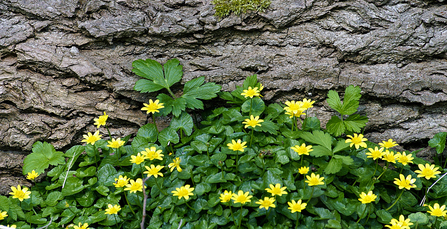As the days get longer, our spirits get brighter and we start to search for the first signs of spring. For many botanists, February 21st marks such an occasion, as this is when a familiar yellow flower begins to carpet our landscape…
The flower in question is the lesser celandine (Ficaria verna), a remarkable star-shaped, golden beauty from the buttercup family. If you’re lucky, you may find one or two in your garden, but typically this flower is a damp dwelling species. If you want to find one for yourself, I suggest exploring spaces you think they could brighten, such as overgrown woodlands, hidden streams, and juvenile meadows.
The Romantic History of the Lesser Celandine
The return of the humble swallow (Hirundo rustica) is the namesake behind the lesser celandine. To understand the association between the two, we need to back to the 18th century, when Gilbert White (a well-known naturalist and ornithologist) first noted that the return of the swallow coincided with the blooming of the lesser celandine. White observed that the swallow (and other migrants) often returned close to the end of February, contradicting the observations of his peers1. This revelation, although not radical, was due to his southern residence in Selborne, Hampshire.
If you would like to learn more about Gilbert White, I suggest reading “The Natural History and Antiqutites of Selborne” (1789).


